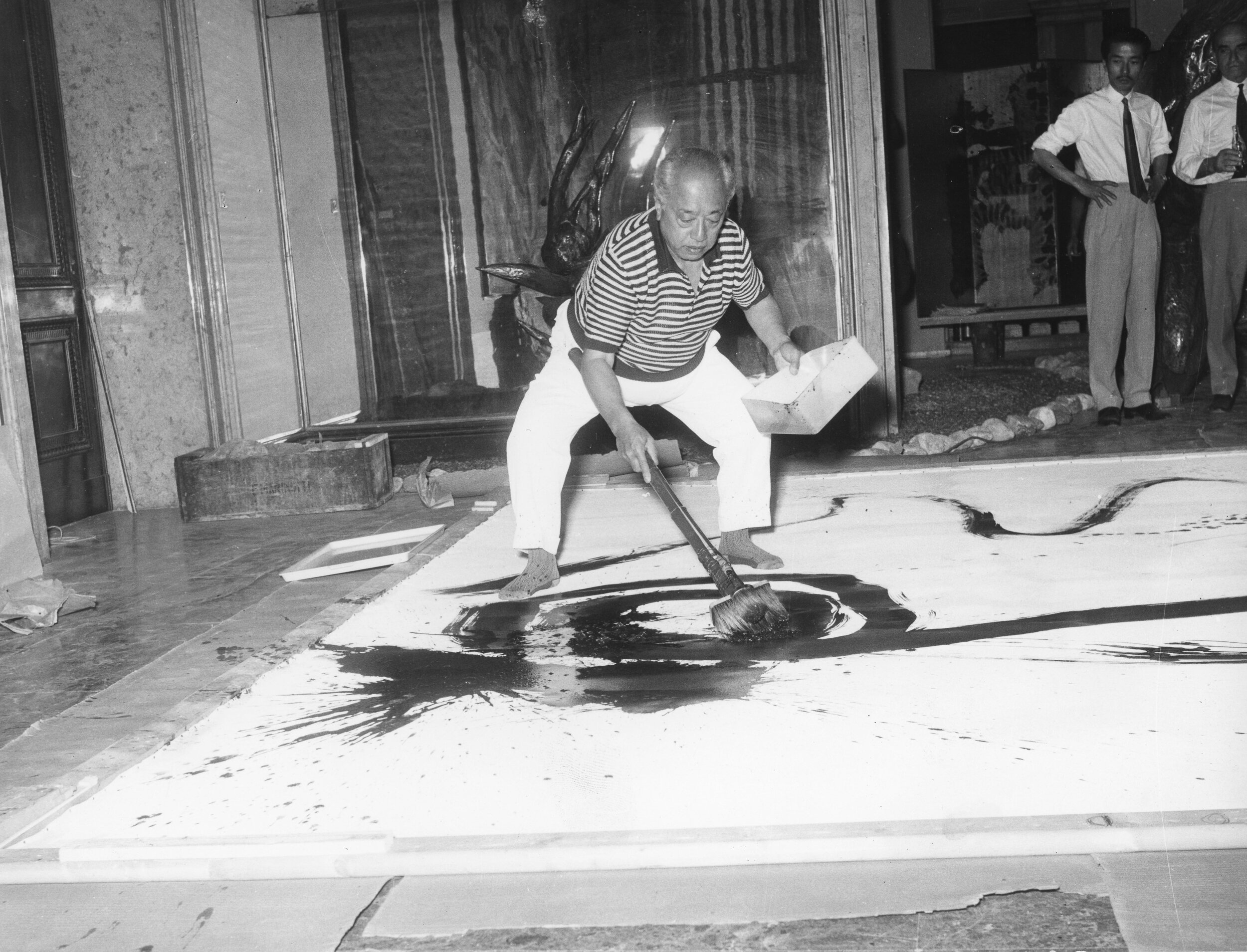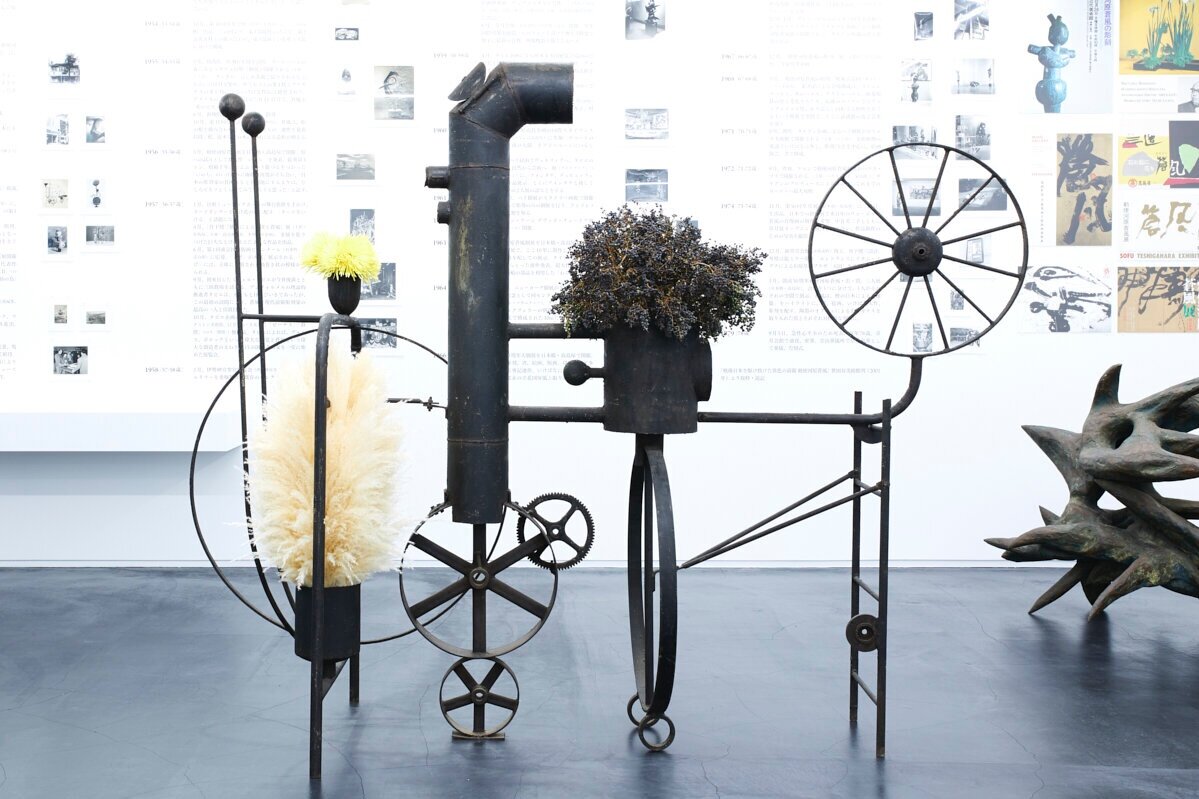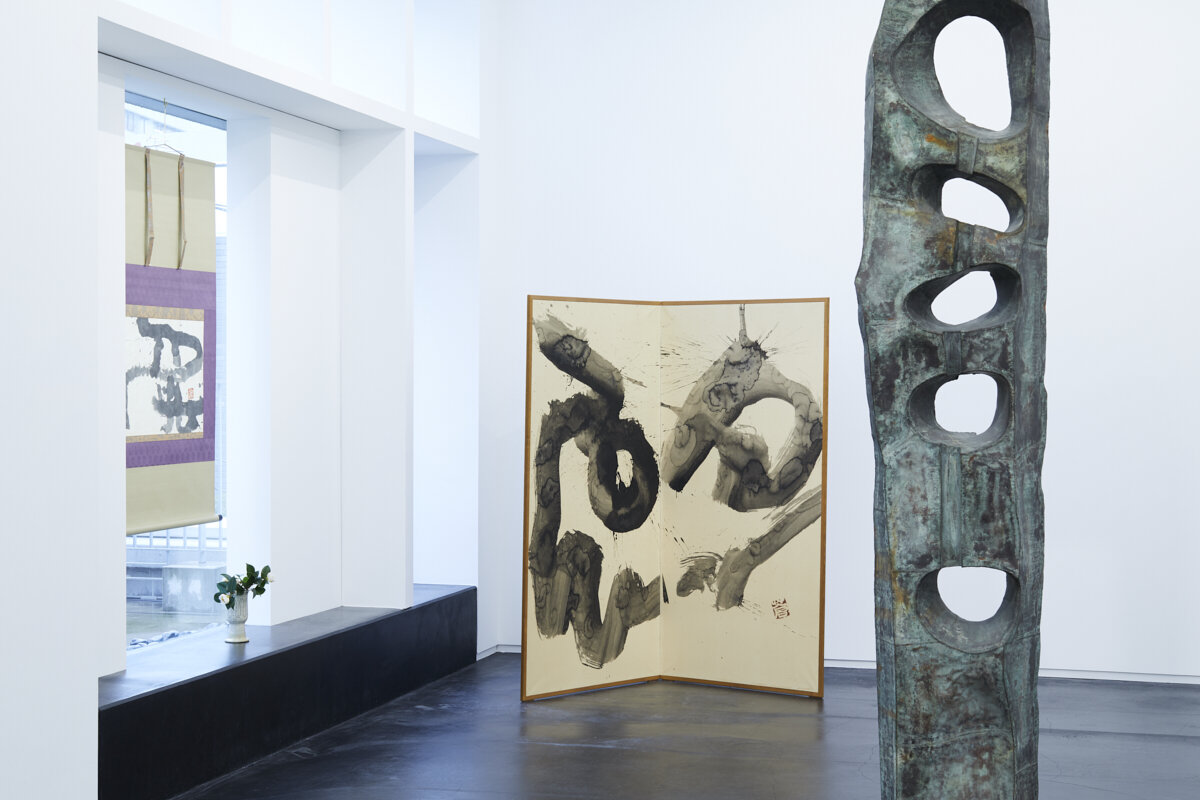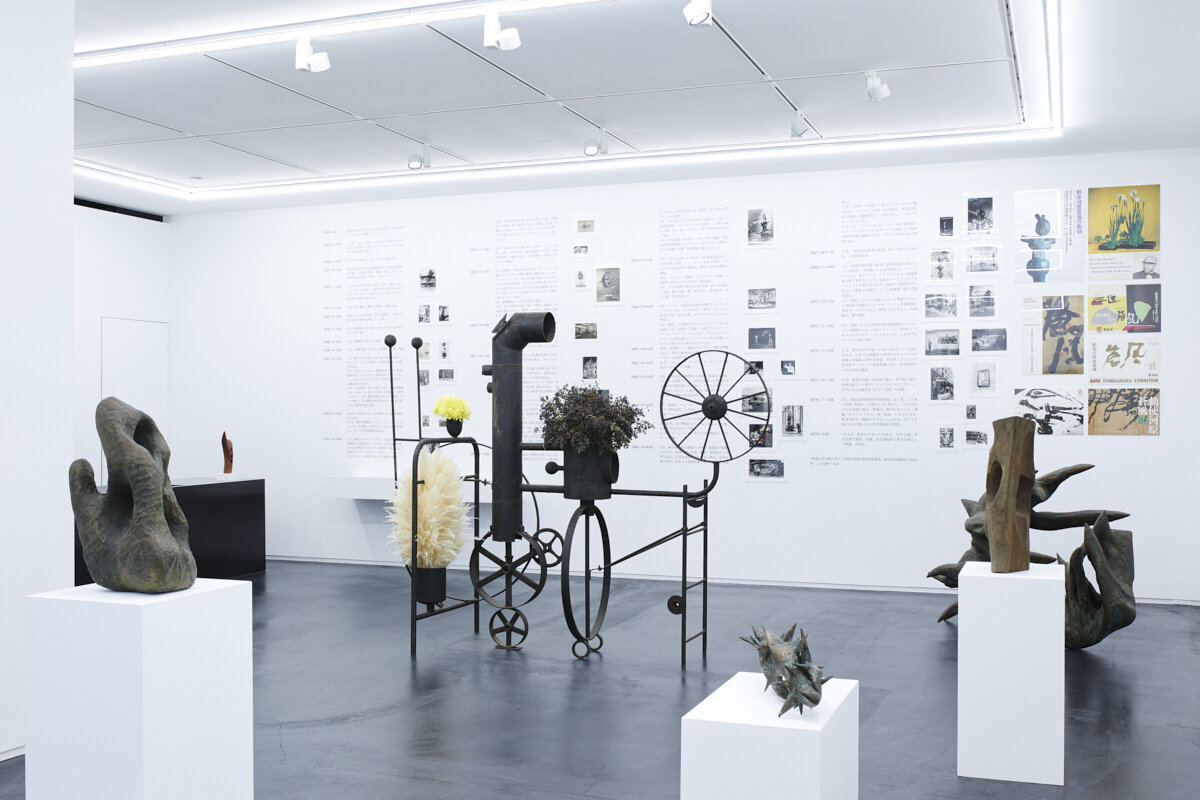The Genius Of Sofu Teshigahara
Sofu Teshigahara. ©Sogetsu Foundation / Courtesy of the Foundation and Taka Ishii Gallery.
What comes to mind when you think of Ikebana, the Japanese art of flower arrangement, a tradition which dates back to the 7th century? During that time Ikebana was solely used for religious ceremonies. Only in the 16th century these flower compositions started to gain popularity with the wider community when Buddhist tea masters introduced Ikebana as an important visual component of tea ceremonies. Over the centuries, the Ikebana movement grew to an astounding number of schools, exceeding thousands of different practices in Japan and abroad. This art form has been constantly evolving but it wasn’t until the creative genius of Teshigahara revealed itself in the form of the Sogetsu School of Ikebana in 1927, that Ikebana marked its place in the history of art.
Born into an Ikebana artist family, Sofu Teshigahara (1900–1979) started taking lessons in his early childhood. Growing up in the formalistic traditions of Ikebana with his father being an important artist, Teshigahara eventually broke away from the classical way of doing things and led an avant-garde Ikebana movement together with artists Houn Ohara (1908–1995) and Yukio Nakagawa (1918–2012). This innovative approach to Ikebana— traditionally known as a very rigid and regulated art form—contributed to a growing popularity of the practice and to Teshigahara starting to set new art trends, within Japan and abroad.
Thinking about the relationship of Ikebana with space, Teshigahara was looking for innovative forms, reflecting both beauty and decay, and capable of expressive storytelling through minimal appearance. Engaging with the experimental spirit of modern art, Teshigahara set to combine plants with vases hand-crafted from iron, which resulted in works such as Sanpo (Walk, 1951) and legendary Kikansha (Locomotive, 1951).
Later he followed on to entirely eliminate plants, presenting the sculptural work, Mure (Flock, 1953). In this first truly revolutionary work of Ikebana art, Teshigahara hoped to demonstrate that it was possible to create expression with absolutely anything. It was a liberation of form, setting up a free dialogue with space.
An avid art lover, Teshigahara traveled to the United States and Europe in the 1950s. There, encounters with artists and exposure to important works of modern art expanded his vision and pushed him into shifting to new materials, including roots and lumps of bark.
Their natural organic forms encouraged experiments with large-scale sculptural works that reflected an overwhelming vitality of plants. Among these works was Inochi(Life, 1956), which appropriated three tons of thousand-year old wisteria vines, and a 30-meter tall Ikebana work titled Maten (Babel, 1958), produced as a symbol for the Ise Grand Shrine Expo.
Teshigahara’s artistic collaborations culminated in 1978 when Isamu Noguchi (1904–1988) completed a huge commission work for Sogetsu Plaza. A stone and water garden, Heaven has become one of the signature art landmarks in Tokyo and until today, serves as a venue for numerous exhibitions, live performances and, of course, Ikebana demonstrations. Noguchi and Teshigahara became true friends sharing a unique vision of materials, forms and spatial perception. Noguchi liked talking about his works as his “intrusions forgiven by nature,” which so accurately resonated with Teshigahara’s philosophy and found representation in everything he created in Ikebana art and beyond.
This article has originally been published at COBO Social. Link to the full version of the article here.





